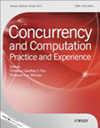Voting has always been a crucial topic of public attention for democratic reasons. The ease of use and low cost are the result of e-voting being frequently used for such important decision outcomes. However, the tremendous authority and intervening data in current e-voting systems make it risky and difficult to achieve correct equity and clarity in e-voting. So, by combining e-voting with blockchain technology, these issues can be resolved while providing reorganization and intervention-resistant characteristics. A voter's improper manipulation, frequent voting, or non-party voting, may also undermine fairness. A verifier is therefore required to check the e-voting mechanism in order to ensure its effectiveness and control the process equality and fairness. In this paper, a Blockchain-based e-Voting Mechanism (BVM) is developed for providing the end to end security and fairness for transparent voting. This mechanism also provides a zero-knowledge proof (ZP) based verifier to inspect the voting procedure against voter's mis-operations and uses a novel Improved Master-key Administration (IMA) based public key cryptography to attack prevention. The utilization of blockchain technology ensures transparency, anonymity, confidentiality, authentication, tamper resistance, and a high level of data integrity, making it a promising choice for modernizing and enhancing the electoral process. Also, the performance of BVM has been compared with similar voting mechanisms and analyzed based on time complexity, security analysis, performance factors like delay and throughput, and anti-attack examination.


